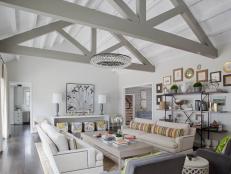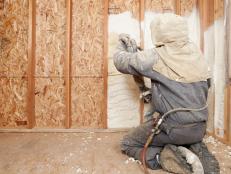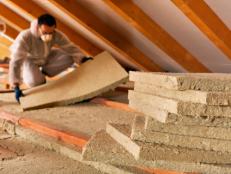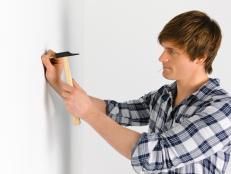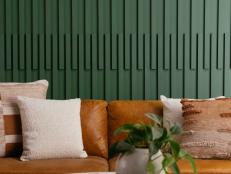Air Sealing a Drafty House
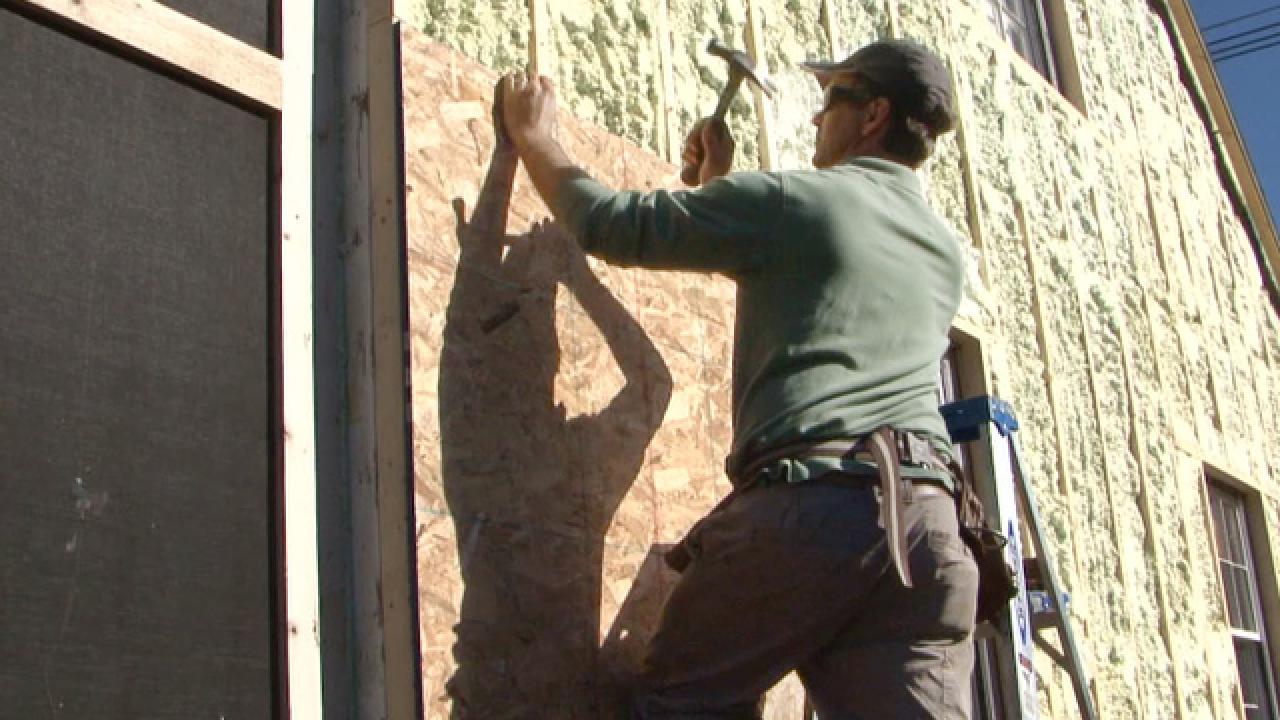
A leaky house can run up hefty energy bills. So rather than continuing to heat and cool a 70-year-old home with virtually no insulation, the Wilson family embarked on a Deep Energy Retrofit (DER) that will eventually bring the operating cost of their house down to zero.
Imagine not paying to heat or cool your home.
"I'm hoping we can save 50 to 90 percent on our energy costs from the process, which is a combination of air sealing, insulation, windows and doors and new off-the-shelf HVAC technology," says Jeff Wilson, who jump-started the DER on his Athens, Ohio, home with a thorough energy audit and assessment to pinpoint leaks.
Air Sealing and Insulation for Maximum Efficiency
See All PhotosAir sealing is a key component of the DER and what will allow the Wilsons to live comfortably in their home.
"The idea that you have to freeze in the dark in the new energy economy is wrong," Jeff says. "We want our houses to be more responsive, healthier and cheaper to run. We can have that."
Before Air Sealing the Home
Five years ago Jeff began exploring ways to improve the insulation in his home. Like most old houses, the construction left a gap — a big air pocket — between the plaster wall and the original redwood exterior siding. (The previous owners had slapped aluminum siding on top of this damaged surface.)
Jeff hired a company to blow cellulose insulation into the walls to fill that gap. Cellulose is essentially chopped-up newspaper treated with a fire retardant. Pieces of exterior siding are removed, and holes are punched into the surface to make room for hoses that force insulation into the wall. The damp cellulose expands in the wall cavity and prevents air passage. The price of this service was $1,200 in 2005.
Immediately afterward, Wilsons' heating bills dropped 10 percent to 15 percent. "And there was less noise from outside," he adds. Because the front of the home is brick, cellulose was blown in through interior walls. Jeff patched up holes in the plaster wall after the project.
Still, after this additional padding, the average monthly cost of heating and cooling the home was $160. Jeff intended to slash this price, tighten the home and improve indoor air quality with air sealing.
Air Sealing Two Ways
Jeff used a combination of green retrofit technology and new construction techniques on his home air sealing project. The original home needed a "curtain wall" — layers of insulation enveloping the home. The new garage/addition was insulated from the interior, using the same products but a different application technique.
House: Air sealing efforts focused on insulating the exterior of the home. This required removal of the aluminum siding, which revealed rotted redwood siding. Underneath the siding was plank sheathing fixed to the home's skeleton — 2x4 framing. Cellulose filled the cavity between the framing and the plaster interior walls.
Jeff used the redwood siding as his starting point, fixing 2x3 studs (the skeleton) into the redwood siding that looked like a grid. Then, Jeff filled those gaps with 2 1/2 inches of Foam-It Green spray-foam insulation. Over the foam, Jeff fixed standard sheathing. On top of this, he applied house wrap. "The house wrap was a little redundant because the air sealing from the foam would have air sealed the house, but we were concerned about making this last," Jeff says.
Siding was the last step, and Jeff opted for SmartSide, which is ready-to-paint engineered wood siding treated with nontoxic resins.
New Garage/Addition: Jeff employed new construction techniques on the garage/addition, building 2x6 walls for a deeper cavity to hold more insulation. (By comparison, the original home's walls are a true 2x4.) Sheathing was applied on top of the new addition's framing, followed by house wrap. Then, Jeff worked on insulating the interior wall since he had complete access to this surface — unlike with the original home, which already had painted plaster walls in place.
Jeff filled between the framing with 2 1/2 inches of Foam-It Green spray insulation. That gave him three more inches of wall cavity to add more insulation, so he chose fiberglass batting with an energy efficient rating, or R-value, of R-13. Finally, interior walls were installed. (Remember, the original home's cavity is filled with less-efficient cellulose and air sealing was accomplished by insulating the exterior.)
Garage Floor: Rather than laying a basic concrete slab floor, Jeff opted for a floating slab that is cradled with foam insulation four inches thick on the bottom and two inches thick on the sides. "The slab doesn't touch concrete block or dirt," he explains. "It sits on foam, and there is plastic underneath to keep moisture from seeping through."
Why bother insulating the floor? By doing so, Jeff will prevent heat loss and cold air entry through the cement. "Even though it's a garage, it's still a workshop and upstairs is space we'll inhabit as an office or bedroom," he says.
DIY Tips
The insulating techniques Jeff used will give the home a long-lasting air seal — at least 70 years, and probably longer, he estimates. "We're not only making the house last longer, we're adding something to it that's just not going to go away," he explains. "The payback is dependent on what energy costs do in the coming years."
- If you want to beef up the insulation in your home, start by finding out where the leaky spots are by getting an energy audit. That way you can focus your dollars on trouble spots.
- Blown-in cellulose insulation can fill empty wall cavities and decrease heating bills. Jeff realized a 10 percent to 15 percent savings immediately for the $1,200 project.
- When planning a new addition, investigate off-the-shelf technologies that will boost your home's R-value. Jeff double-insulated using spray foam and batting, achieving R-27 — double the efficiency of his home's walls when they were only filled with cellulose.










